Understanding risk
Sensitivity analysis is an important tool when assessing risk on property development projects, we already have advanced sensitivity analysis built into Aprao, you can read more about that here.
However, we know that property development is constantly evolving and a lot of the time there are many moving parts to a project. As a result the analysis of a project is much more iterative and ongoing than a static look at numbers.
As a result we have now introduced real time sensitivity analysis which is visible in-line when you are running your development financials.
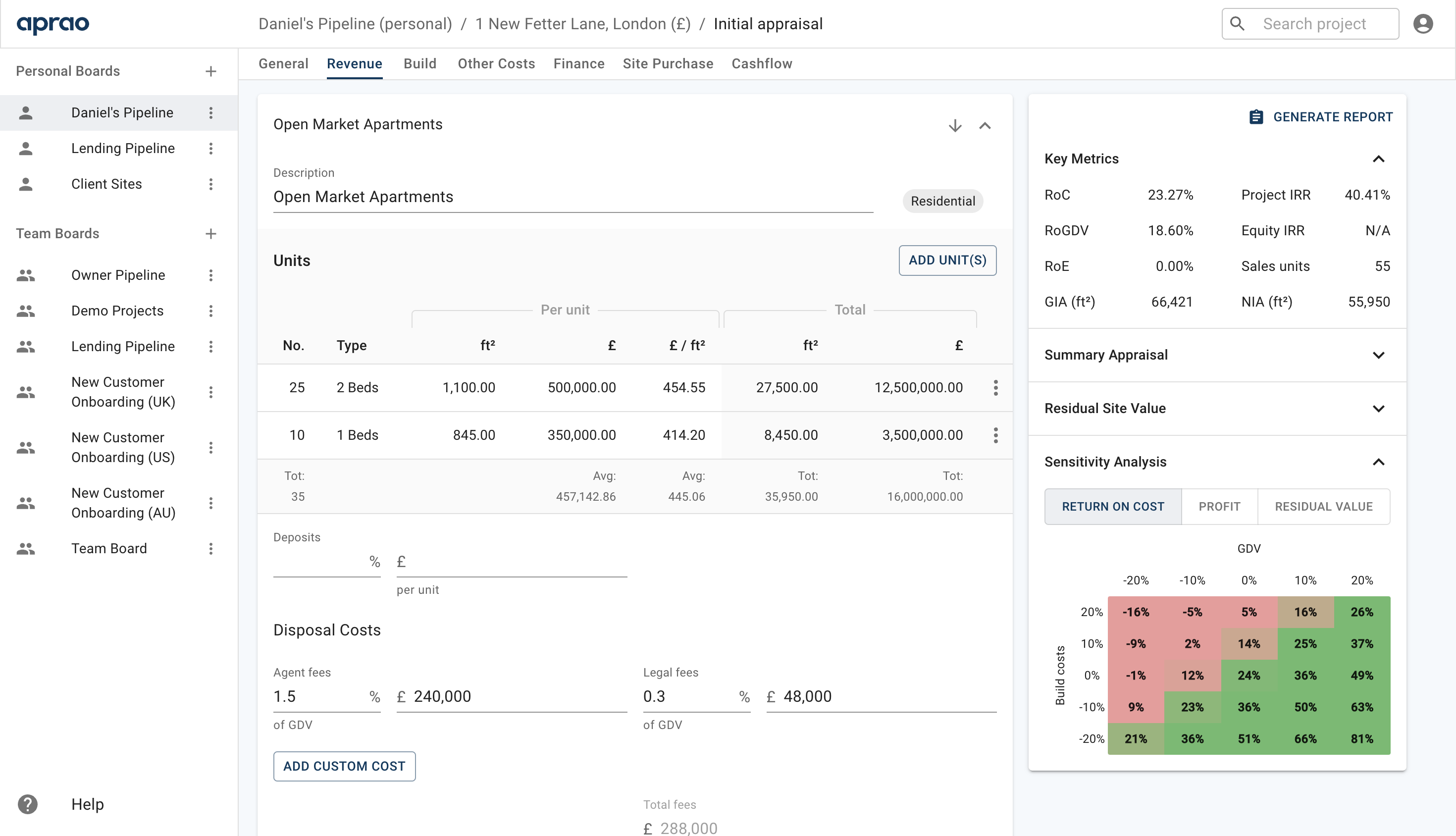
On the right hand side of the screen you will see a new sensitivity analysis which shows you 25 different scenarios at a glance. Aprao is running 25 different financial models in the background to generate the financial outcome and give you the metrics in real time.
Return on cost sensitivity
The first is the return on cost sensitivity (also known as profit on cost or yield on cost) which looks at the profit as a percentage compared to the total cost of a project.
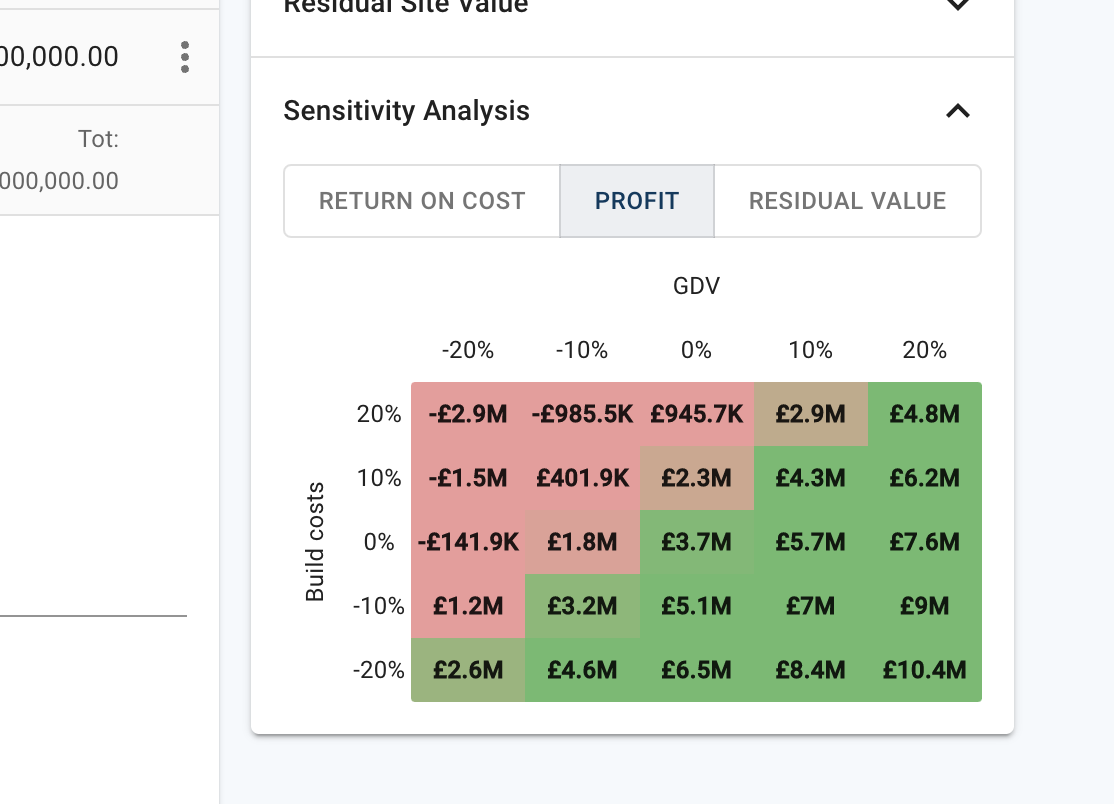
For example, you can quickly see that if your Gross Development Value (GDV) increases by 10% but your build cost increases by 20% then your return on cost (also known as profit on cost or yield on cost) then the return on cost changes from 24% to 16%.
Profit sensitivity
Next up is the profit sensitivity which looks at the financial result of the return on cost.
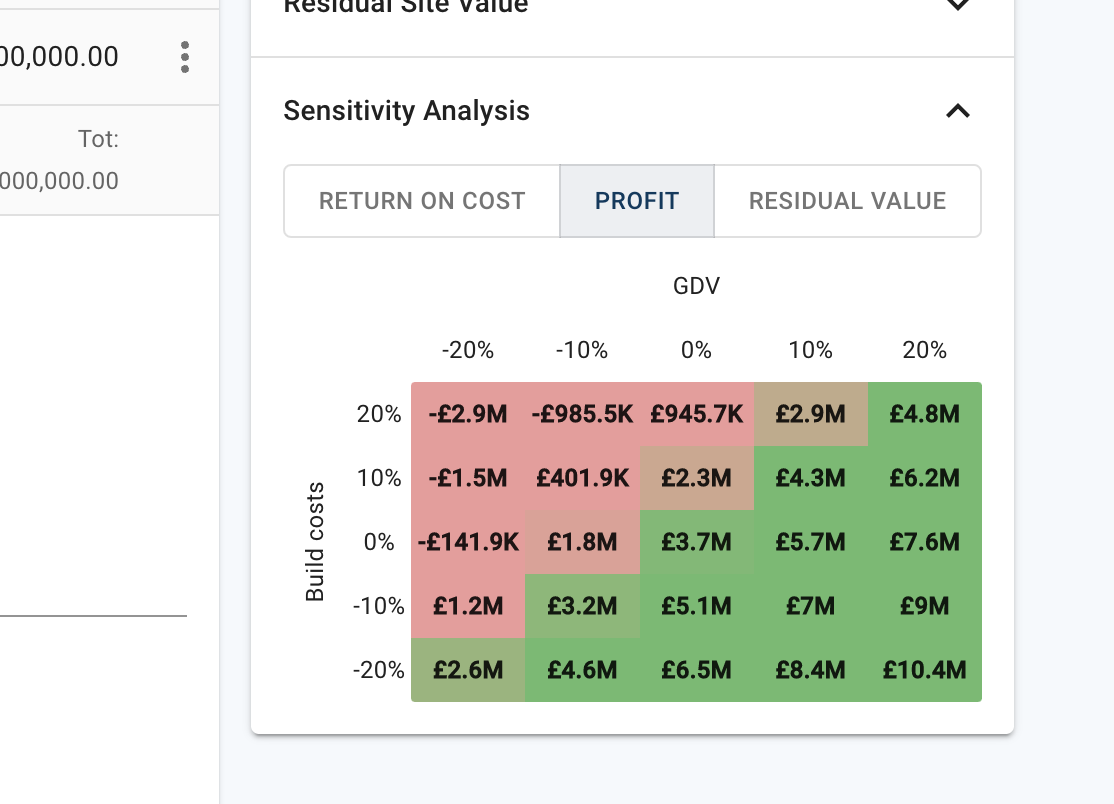
Residual value sensitivity
The third tab is the residual value sensitivity. You can set your target return as a % of cost or GDV and then the table will update in real time to inform the user of the maximum purchase price or valuation of the site based on the inputs.
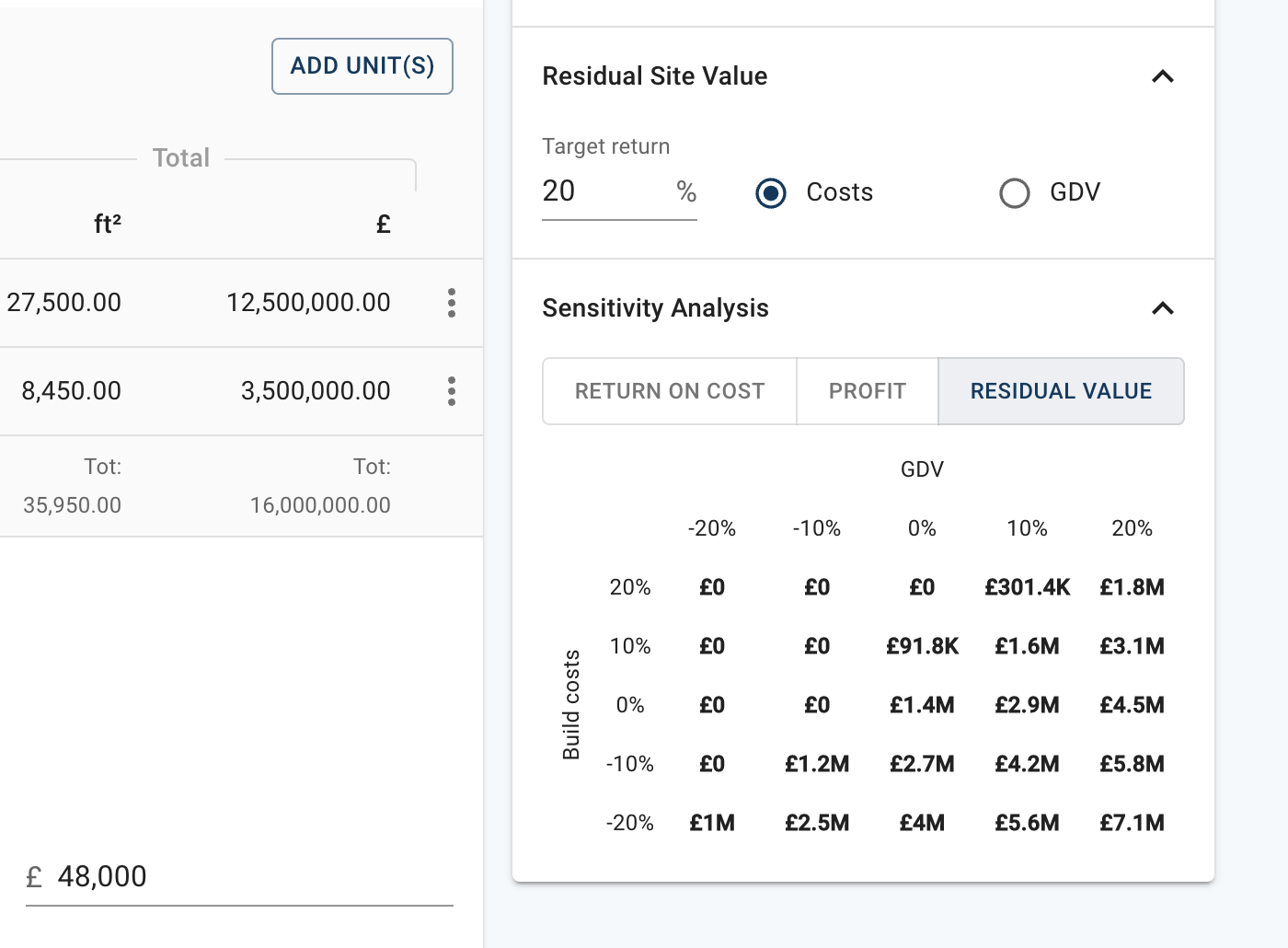
Summary
All three interactive sensitivity tables are now released and available to all Aprao customers. When you next log into Aprao you will see the expandable panel on the right hand side of the screen and can toggle between the three tables.
Existing customers can log in here to take a look and new customers can click here to sign up for a free 14 day trial of Aprao.
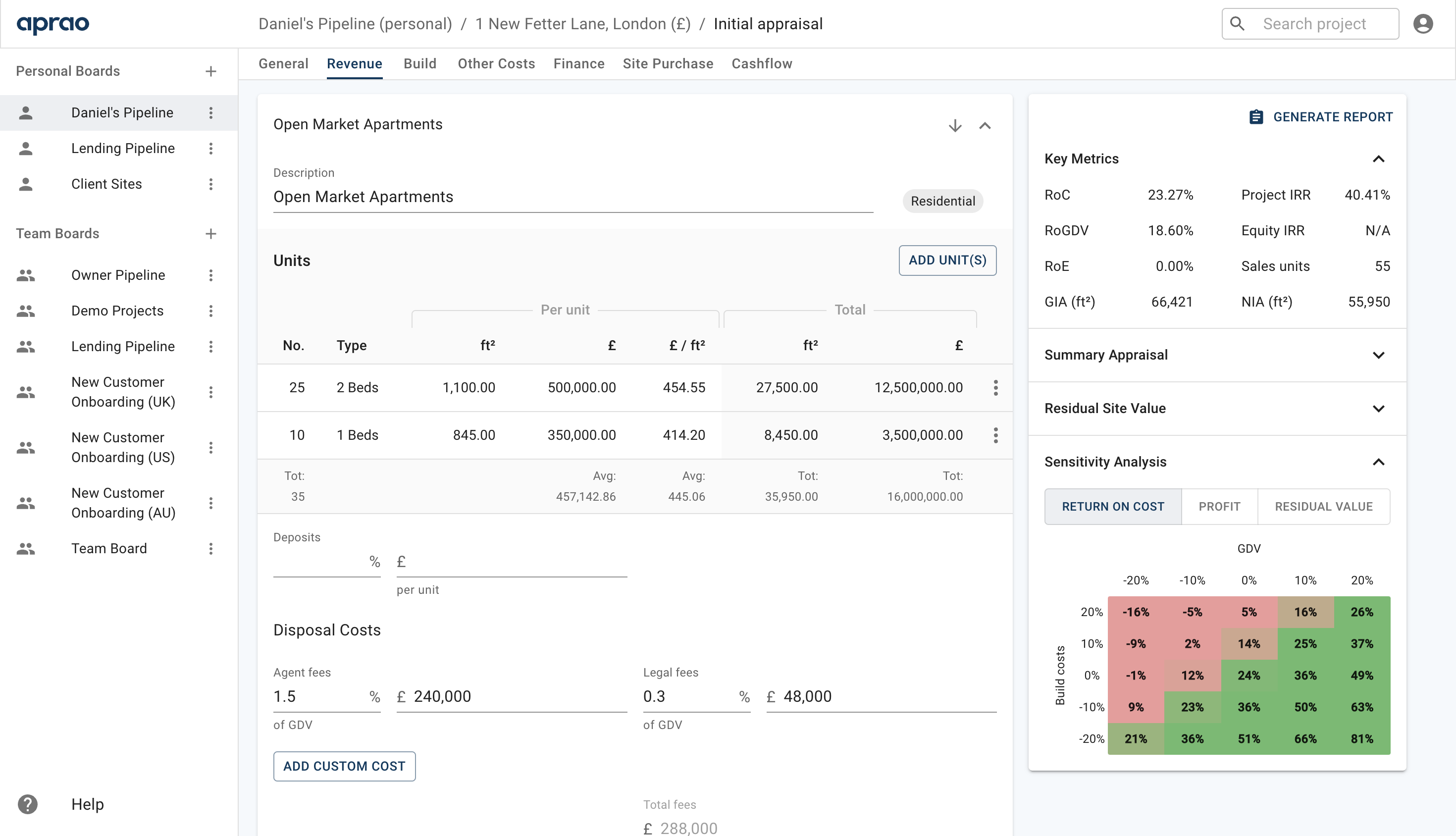





Leave a comment